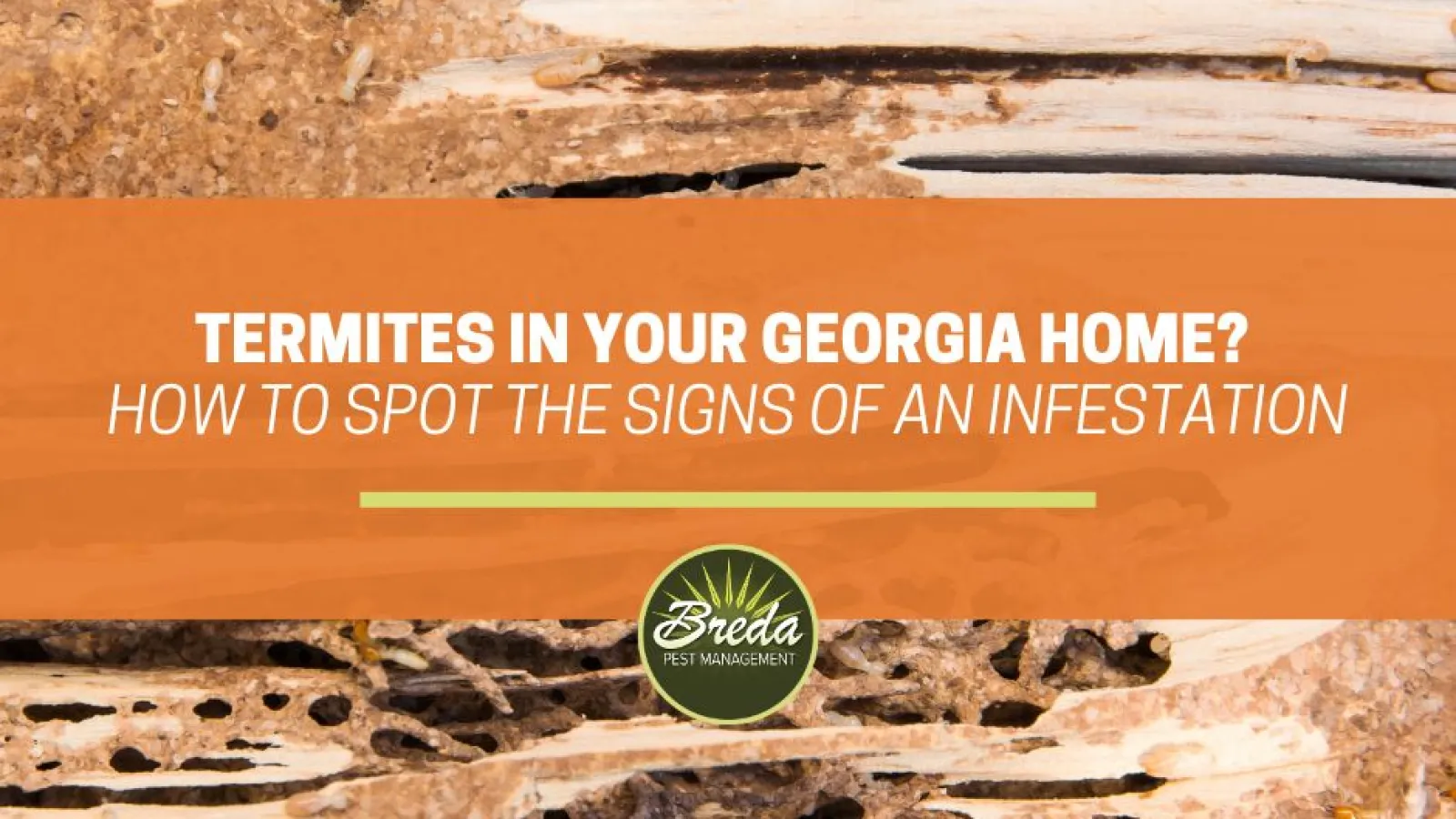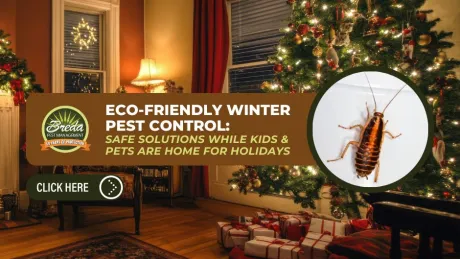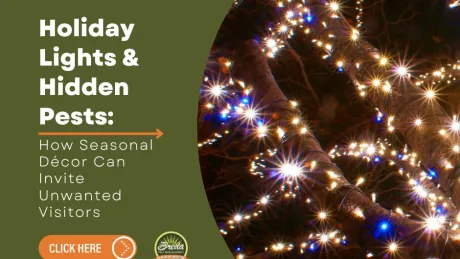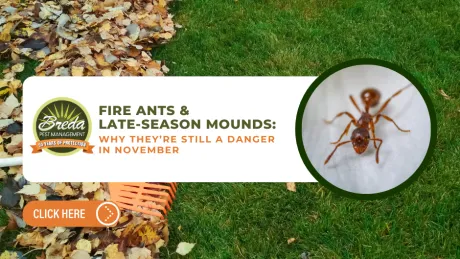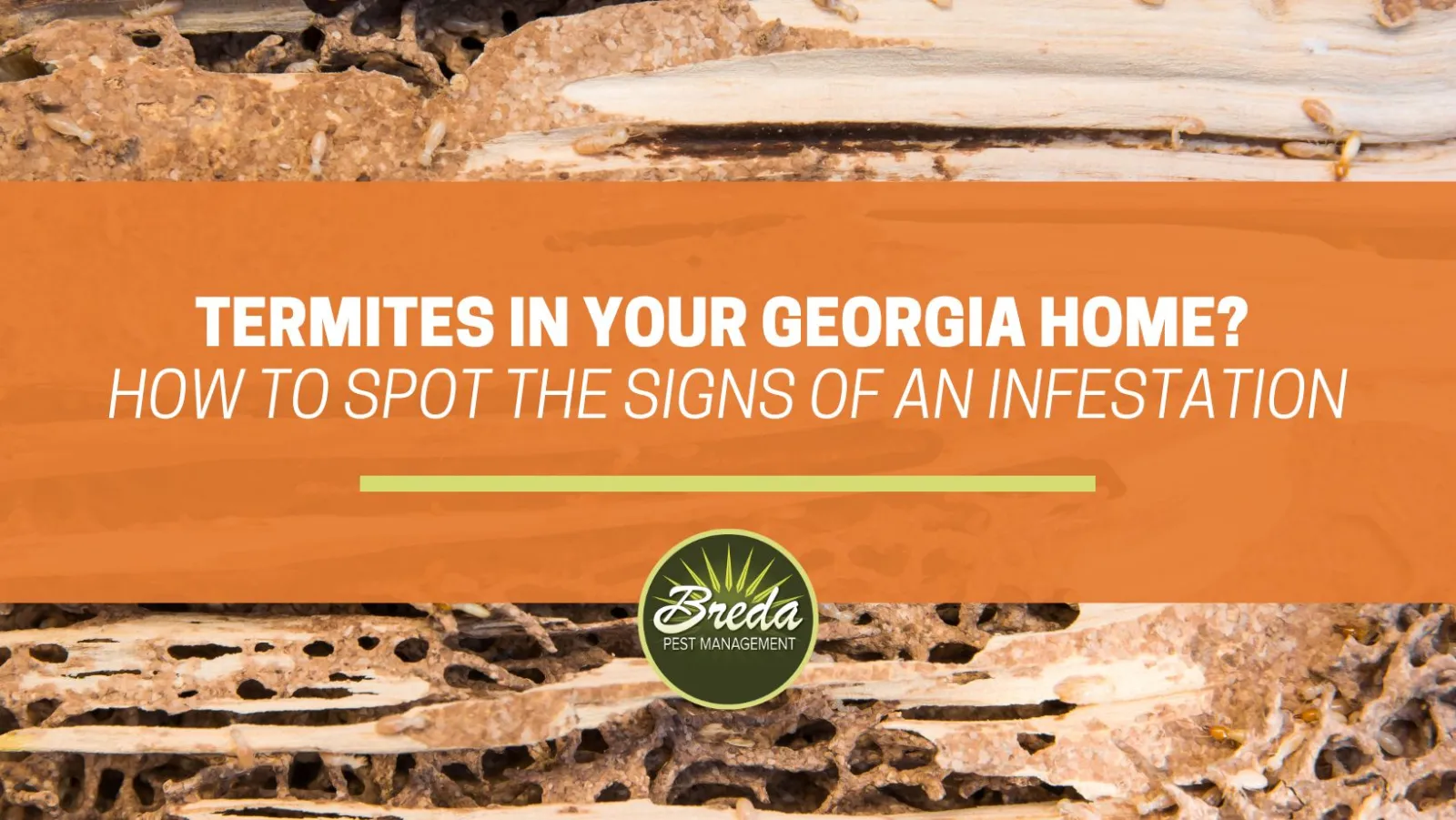
In our previous blog, we shared five pest control tips Georgia homeowners could use to help prevent a termite infestation in their house. Despite that prevention, there is always a chance that termites will discover even the smallest entry into a house and quickly grow into a big problem for homeowners.
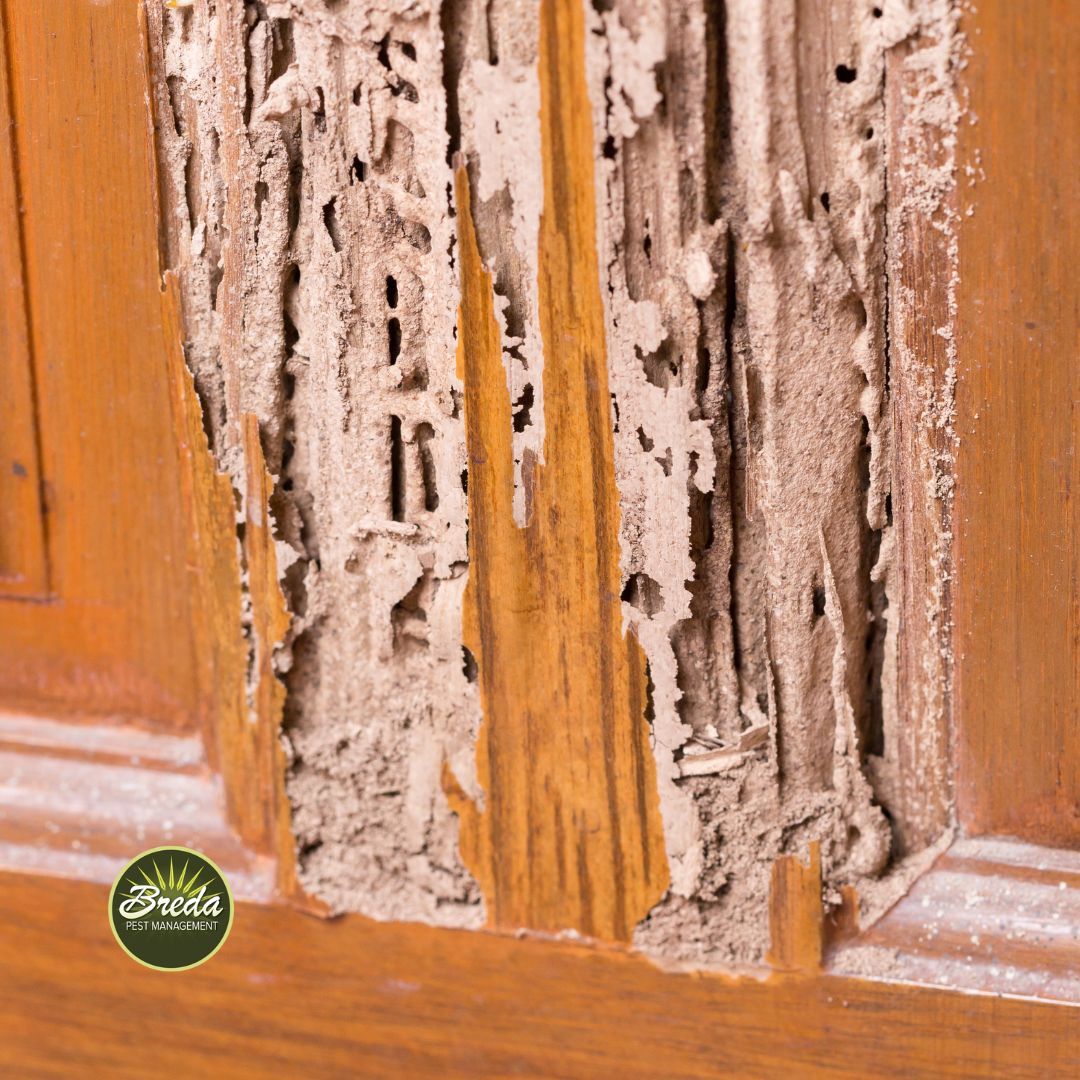
To help either ease your mind that your house is termite-free or offer confirmation that termites are likely present inside your house, we wanted to share five common signs of a termite infestation.
Most Common Type of Termite in Georgia
Thanks to the favorable environmental conditions in Georgia, the Eastern subterranean termite is the most common culprit of termite infestations in Georgia. These termites travel under the topsoil layer (you will never see them crawling like ants!), and they are always foraging and looking for new cellulose material (like wood) to feed on. Because they are subterranean, they unfortunately come in contact with a lot of house foundations and use them as their entry point into the rest of the house. If a proper termite pest control measure like a termiticide liquid barrier or baiting system hasn't been put into place by either the homeowner or an exterminator, termites can feast for a long time before being noticed.
Georgia Termite Infestation Signs
While there are many clues termites might leave homeowners, we wanted to share some of the more common signs of termite activity that you might spot in your house. If you spot any of the signs on this list, it's time to call the exterminator!
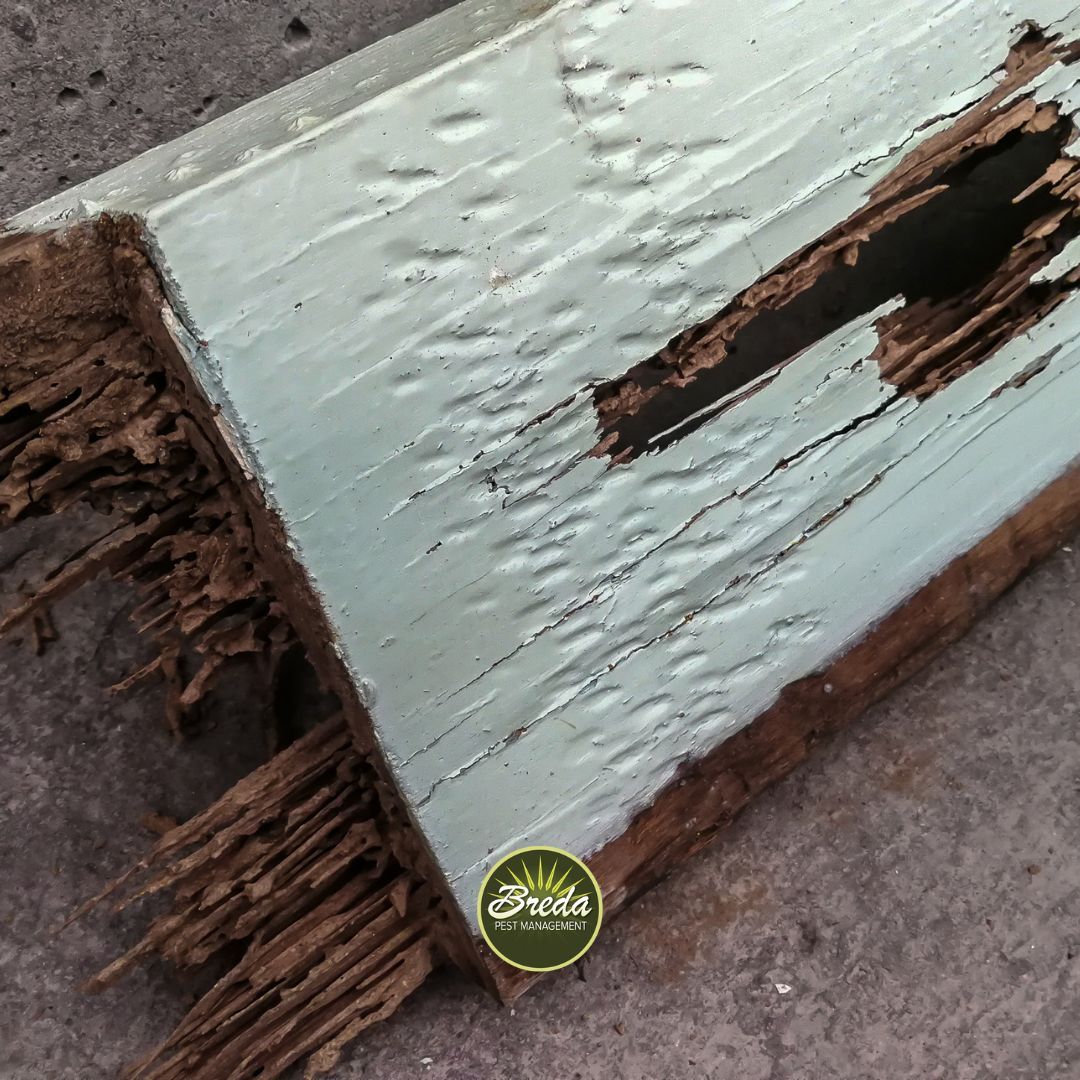
Drywall—While discolored or drooping drywall could also be a sign of excess moisture levels, termite activity and moisture are often discovered to be in the same area. If your drywall doesn't look quite right, take a closer look!
Damaged Paint—Peeling paint caused by a termite infestation will resemble water damaged paint. Since water and termites are such good friends, rule out water damage to the paint before moving on to looking for termite activity/damage.
Wood—As termites feed on the nutrients inside wood, the solid structure of the wood begins to break down and only leaves fibrous strands. This will cause the wood to sound hollow when you tap on it.
Holes—Small pinpoint holes in drywall are typically caused when emerging termites are coming through the wall. This exodus is called a "termite swarm" and usually occurs in early spring.
Floors—When wooden floor joists have been infested with termites, floor boards above them will begin to buckle.
Even though these signs might seem easy to spot, it may take months or even years after a termite infestation begins before the signs are visible to the naked eye. The best way to protect your home is by utilizing the services of a state-licensed termite pest control company like BREDA Pest Management. The combination of continuous training, education, and experience, along with access to specialized equipment like thermal imaging cameras, microwave technology, and moisture meters provide Georgia homeowners with the most reliable termite inspections available and peace of mind that any infestation found will be eliminated.
If you find yourself needing pest control and want it handled thoroughly, don't hesitate to give us a call. The BREDA Guarantee promises to fix your pest problem and keep it fixed—no matter the circumstances. Schedule a consultation online or give us a call at 770-466-6700.
